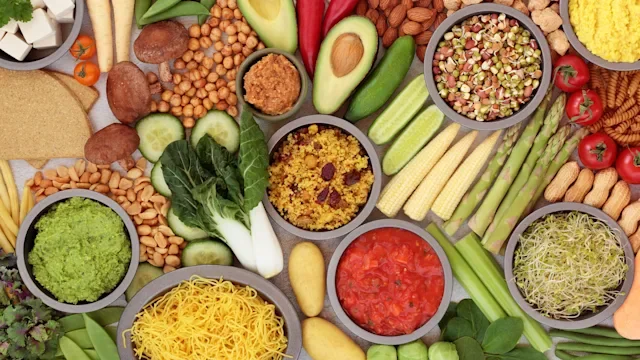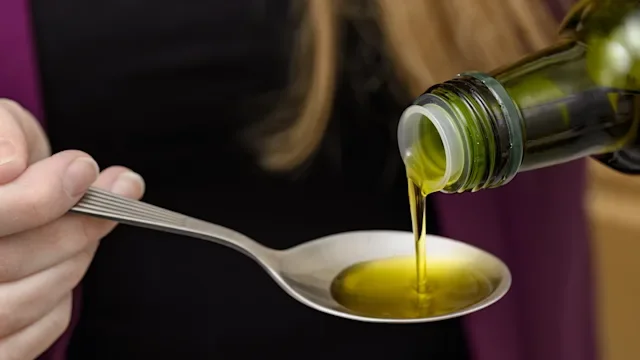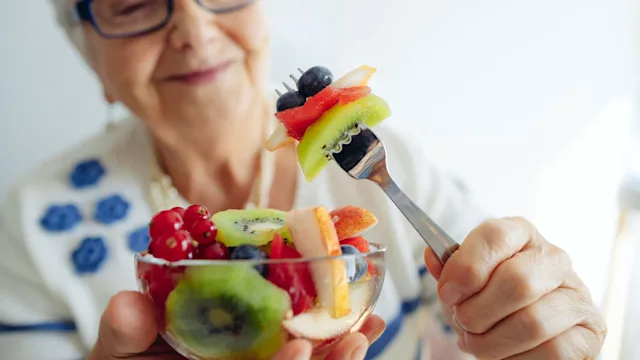Key takeaways:
Oatmeal is a nutritious breakfast option. It contains protein and fiber, which can help with weight control.
Studies show that oatmeal can increase fullness, decrease appetite, and reduce calorie intake. This can help people who want to lose body weight.
You can add even more protein and fiber to your oatmeal to meet your nutrition goals. To increase your oatmeal’s protein content, prepare it with milk, egg whites, or Greek yogurt. To increase the fiber content, add fruits, nuts, and seeds.
Oatmeal is a hearty and nourishing breakfast option. In addition to being a warming comfort food, oatmeal also has some great health benefits. It’s filled with soluble fiber, a type of fiber that can help lower cholesterol levels and aid weight loss.
Whether you prefer steel-cut or old-fashioned oats, both are nutritious choices. But how you prepare and garnish your oatmeal is also important. Here are some tips for making the best morning meal to help with weight control.
Nutritional benefits of oatmeal
Oatmeal contains several essential nutrients that are important for your health. Here are some of the nutritional perks of your morning oatmeal.
High fiber content
A half-cup of dry old-fashioned oats (which makes about 1 cup of cooked oatmeal) has 4 g of fiber.
Oats contain a type of fiber called beta glucan. It’s a soluble fiber with high viscosity. This means it thickens and forms a gel in your gut. The benefit? It makes you feel full and reduces your appetite, which can aid in weight management. Soluble fiber also helps manage cholesterol levels.
Rich in vitamins and minerals
Oats are a source of the following vitamins and minerals:
Iron: Iron helps make red blood cells.
Thiamin: Thiamin (vitamin B1) helps turn the food you eat into energy for your body.
Phosphorus: Phosphorus helps support healthy bones and teeth.
Magnesium: Magnesium helps muscles to function properly.
Potassium: Potassium helps with heart, kidney, and muscle function.
Source of protein
Oats are mostly carbs (about 60%), but they also contain 7% fat and 14% protein. That’s more protein than many other cereal grains.
A half-cup of raw oats (1 cup cooked oatmeal) has:
150 calories
27 g carbohydrates
5 g protein
2 g fat
How to add protein to your oatmeal: A dietitian explains the best ways to add extra protein to your oatmeal.
The best foods to lower cholesterol: If you have high cholesterol, try incorporating one or more of these foods into your routine diet.
How to boost your weight loss plan: Learn the best ways to help you reach your weight goals, according to research.
Low glycemic index
Glycemic index (GI) is a measure of how quickly a food or drink will raise blood sugar levels. This is used to classify foods as:
Low-GI: Food or drink with a GI less than 55
Mid-range: Food or drink with a GI of 56 to 69
High-GI: Food or drink with a GI over 70
The lower the GI, the better. The GI value of oats depends on how they’re processed:
Steel-cut oats: Steel-cut oats are whole oat groats chopped by a steel rolling saw. These have a low GI of 52.
Old-fashioned oats: Old-fashioned oats are flattened whole oat groats. When made into oatmeal, they have a low GI of 49.
Oat flakes: Oat flakes are old-fashioned oats that have been cut into much smaller pieces. They’re sold as “quick-cook” or “instant” oats. They’re digested more quickly by your body and have a mid-range to high GI between 62 to 75.
Read more like this
Explore these related articles, suggested for readers like you.
For less impact on blood sugar levels and better appetite management, choose whole steel-cut or old-fashioned oats instead of oat flakes.
Quiz: What should I eat for breakfast?
Studies on oatmeal and weight loss
The protein and fiber in oatmeal help increase satiety (feeling full). This means you’re less likely to eat more calories than your body needs, making it easier to find the right weight for your body.
Studies show that diets with lots of protein lead to more weight loss compared to lower-protein diets. Protein increases the release of hormones that help you feel full, which decreases your appetite.
Diets high in fiber also help promote satiety. Soluble fiber, such as the beta glucan found in oats, forms a gel during digestion. This slows down digestion, keeping you feeling full longer. Fiber can help reduce weight and lower body fat levels.
Collectively, studies show that eating oatmeal can help with weight control. This is largely due to the fiber and protein content in oats. Specifically, studies show that eating oatmeal helps:
Decrease appetite
Increase satiety
Reduce calorie intake
Reduce body weight
Reduce body fat levels
One study compared appetite and fullness levels after eating sugary breakfast cereal versus oatmeal. After eating the same number of calories at breakfast, people who ate oatmeal felt fuller. They also felt less hunger for a few hours after breakfast. That could result in less snacking, which can help with weight management.
Tips for making your oatmeal better for weight loss
You can increase the protein and fiber content in your oatmeal based on how you prepare it. Old-fashioned oats have 5 g of protein and 4 g of fiber per cup (cooked). On their own, oats don’t have enough protein for a complete breakfast. You can bump up the protein content of your oatmeal with:
Milk
Soy beverage
Protein powder
Egg whites
Greek yogurt
Peanut butter or another nut butter
Nuts and seeds
You can add extra fiber with:
Fruit, such as berries or bananas
Sweet vegetables, such as pumpkin puree or shredded carrots
Nuts, including almonds, walnuts, and pecans
Seeds, like chia, hemp, and flax
You can also make savory oatmeal bowls by adding in cheese, scrambled eggs, or herbs.
And, as mentioned above, choose steel-cut or old-fashioned oats, instead of instant, flaked, or quick-cook oats. These have a lower GI.
If you’re looking for inspiration, test out the recipes below. Experiment, adjust, and make swaps that suit your taste and nutrition needs.
Berry-banana baked oatmeal
Ingredients:
2 cups old-fashioned oats (dry)
1½ cup milk
2 ripe bananas (mashed)
2 eggs
2 to 3 scoops of protein powder (vanilla or another flavor)
1 tsp baking powder
A handful of berries (blueberries, raspberries or strawberries)
Pinch of salt
Optional: Cinnamon (to taste)
Directions:
Spray an 8-inch-by-8-inch glass baking dish with cooking spray.
Combine all the ingredients in a bowl, then pour into the baking pan. The berries and cinnamon can be mixed in or sprinkled on top at the end.
Bake at 350°F for 30 to 35 minutes, or until a fork inserted into the center comes out clean.
Optional: Top with cinnamon.
Overnight oatmeal
Ingredients:
⅓ cup old-fashioned oats
½ cup milk of choice
1 scoop of vanilla protein powder
½ cup fresh or frozen berries
1 tbsp nut butter
1 tsp chia seed
Directions:
Combine ingredients in a sealable container.
Seal and let sit in the fridge overnight, or at least 4 hours.
Oatmeal pancakes
Ingredients:
1 cup whole wheat flour
1 cup milk
½ cup old-fashioned oats
1/3 cup apple sauce (Pumpkin is also a good option.)
1 egg
2 tbsp maple syrup (plus additional maple syrup to serve)
1 tsp baking powder
1 tsp vanilla
Optional: Cinnamon, pumpkin spice, or apple spice blend (to taste)
Directions:
Combine dry ingredients (whole wheat flour, oatmeal, baking powder) in a large bowl.
Combine wet ingredients (milk, egg, applesauce, maple syrup, vanilla) in a separate medium bowl.
Make a small well in the dry ingredients bowl and pour in the wet ingredients. Stir together slowly until ingredients are combined with no lumps.
Heat a nonstick skillet to medium-low heat. Spray with cooking spray or lightly coat with butter.
Using a ¼ cup measuring cup or scoop, pour pancake batter onto the skillet.
When bubbles appear on top, flip pancakes with spatula.
When the bottom of the pancake is golden brown, flip again. Then, serve.
Potential drawbacks of oatmeal
Though oats have lots of nutritional value, there are a few red flags to watch out for.
Sugar
Instant oats are often made with added sugar to create flavor options, such as apple and cinnamon or maple and brown sugar. Each packet has about 1.5 tsp of added sugar.
Gluten crossover
Oats are a gluten-free grain. But sometimes they contain traces of gluten because they’re grown near wheat fields.
If you have celiac disease or gluten intolerance, buy certified pure, uncontaminated oats. These are special oats that are grown on farms where wheat hasn’t been grown in the previous 2 to 4 years. These farms use dedicated gluten-free equipment for harvesting and packaging oats.
Time
Steel-cut oats take about 20 to 30 minutes to cook. If you don’t have that extra time in the morning, you can make them ahead of time and reheat them in the morning.
Old-fashioned oats are quicker to prepare and are ready in 5 minutes.
Another option is to make overnight oats in advance. Simply soak old-fashioned oats in milk or yogurt in the fridge overnight — no cooking required. Then, add toppings in the morning.
Frequently asked questions
Oatmeal is a healthy choice for several reasons. Oatmeal is high in fiber, particularly soluble fiber. Research shows that soluble fiber can lower LDL (low-density lipoprotein) cholesterol (“bad” cholesterol), and thus lower risk of heart disease. Also, high-fiber foods can help you feel more satisfied and stabilize blood sugar. This can support healthy weight management and improved pre-diabetes and diabetes control. Oatmeal may even help prevent conditions like cancer, stroke, and heart attack because of phenolic compounds, which protect cells from damage.
Oatmeal has both soluble and insoluble fiber that can help with constipation. Soluble fiber creates a gel-like substance when combined with proper hydration, which helps slow down digestion. Insoluble fiber helps to bulk up your stool, which can help waste move through your GI tract. A mix of these fibers can help improve regularity of bowel movements and make them easier to pass.
Yes, oatmeal is good for people with diabetes. Oatmeal improves insulin sensitivity. This means the body is more responsive to insulin and better able to break down the food for energy. In the long term, this means improved blood sugar control for people with Type 2 diabetes. Consistent intake of fiber can improve blood sugar, hemoglobin A1c, and satiety after meals.
Yes, oatmeal is a good source of fiber. For optimal health, it’s recommended that women eat about 25 g of fiber, and men aim for 38 g per day. Dry old-fashioned oats contain 4 g of fiber in a ½ cup serving. When you top oatmeal with other nutritious foods, like nut butter and high-fiber fruit, you can easily fulfill a good chunk of your fiber needs for the day.
You can eat oats raw, but it’s not recommended. Most oats, like rolled oats or instant oatmeal, have gone through processing to roll them out, cut them into smaller pieces, and make them easier for you to digest. To avoid digestive issues and improve taste and texture, it’s best to add some form of liquid for the oats to absorb. Minimally processed varieties, like steel-cut oats, shouldn’t be consumed without cooking, since they have a hard kernel.
Oatmeal is a healthy choice for several reasons. Oatmeal is high in fiber, particularly soluble fiber. Research shows that soluble fiber can lower LDL (low-density lipoprotein) cholesterol (“bad” cholesterol), and thus lower risk of heart disease. Also, high-fiber foods can help you feel more satisfied and stabilize blood sugar. This can support healthy weight management and improved pre-diabetes and diabetes control. Oatmeal may even help prevent conditions like cancer, stroke, and heart attack because of phenolic compounds, which protect cells from damage.
Oatmeal has both soluble and insoluble fiber that can help with constipation. Soluble fiber creates a gel-like substance when combined with proper hydration, which helps slow down digestion. Insoluble fiber helps to bulk up your stool, which can help waste move through your GI tract. A mix of these fibers can help improve regularity of bowel movements and make them easier to pass.
Yes, oatmeal is good for people with diabetes. Oatmeal improves insulin sensitivity. This means the body is more responsive to insulin and better able to break down the food for energy. In the long term, this means improved blood sugar control for people with Type 2 diabetes. Consistent intake of fiber can improve blood sugar, hemoglobin A1c, and satiety after meals.
Yes, oatmeal is a good source of fiber. For optimal health, it’s recommended that women eat about 25 g of fiber, and men aim for 38 g per day. Dry old-fashioned oats contain 4 g of fiber in a ½ cup serving. When you top oatmeal with other nutritious foods, like nut butter and high-fiber fruit, you can easily fulfill a good chunk of your fiber needs for the day.
You can eat oats raw, but it’s not recommended. Most oats, like rolled oats or instant oatmeal, have gone through processing to roll them out, cut them into smaller pieces, and make them easier for you to digest. To avoid digestive issues and improve taste and texture, it’s best to add some form of liquid for the oats to absorb. Minimally processed varieties, like steel-cut oats, shouldn’t be consumed without cooking, since they have a hard kernel.
The bottom line
It’s a great idea to start your day with a warming bowl of oatmeal. As a base, it provides some protein and fiber, making it a smart choice for weight control. To really sustain your fullness, you can embellish your oatmeal with more protein and fiber from toppings, like Greek yogurt, fruit, and nuts.
Choose steel-cut or old-fashioned oats. They’re less processed and better at sustaining appetite and blood sugar levels compared to instant oats. These extra few minutes in your morning are worth the effort. If you’re in a time crunch, consider overnight oats as your new breakfast staple.

Why trust our experts?


References
Akbar, A., et al. (2023). High fiber diet. StatPearls.
Celiac Canada. (2015). Oats for people with celiac disease.
Chambers, L. (2015). Optimising foods for satiety. Trends in Food Science & Technology.
FoodData Central. (2022). Oats, raw. U.S. Department of Agriculture.
Leidy, H. J. (2014). Increased dietary protein as a dietary strategy to prevent and/or treat obesity. Missouri Medicine.
Lusting, R. H., et al. (2022). Obesity I: Overview and molecular and biochemical mechanisms. Biochemical Pharmacology.
Moon, J., et al. (2020). Clinical evidence and mechanisms of high-protein diet-induced weight loss. Journal of Obesity & Metabolic Syndrome.
National Institutes of Health. (2022). Health benefits of dietary fibers vary.
National Lipid Association. (2021). Viscous fiber and your cholesterol.
Office of Dietary Supplements. (2021). Phosphorous: Fact sheet for consumers. National Institutes of Health.
Office of Dietary Supplements. (2021). Potassium: Fact sheet for consumers. National Institutes of Health.
Office of Dietary Supplements. (2021). Thiamin: Fact sheet for consumers. National Institutes of Health.
Office of Dietary Supplements. (2022). Magnesium: Fact sheet for health professionals. National Institutes of Health.
Office of Dietary Supplements. (2024). Iron: Fact sheet for health professionals. National Institutes of Health.
Paudel, D., et al. (2021). A review of health-beneficial properties of oats. Foods.
Rebello, C., et al. (2013). Acute effect of oatmeal on subjective measures of appetite and satiety compared to a ready-to-eat breakfast cereal: A randomized crossover trial. Journal of the American College of Nutrition.
Rebello, C., et al. (2014). Functional foods to promote weight loss and satiety. Current Opinion in Clinical Nutrition and Metabolic Care.
Schoeneck, M., et al. (2021). The effects of foods on LDL cholesterol levels: A systematic review of the accumulated evidence from systematic reviews and meta-analyses of randomized controlled trials. Nutrition, Metabolism, and Cardiovascular Diseases.
Wehrli, F., et al. (2021). Oat intake and risk of Type 2 diabetes, cardiovascular disease and all-cause mortality: A systematic review and meta-analysis. Nutrients.
Zhang, K., et al. (2021). Oat-based foods: Chemical constituents, glycemic index, and the effect of processing. Foods.
















